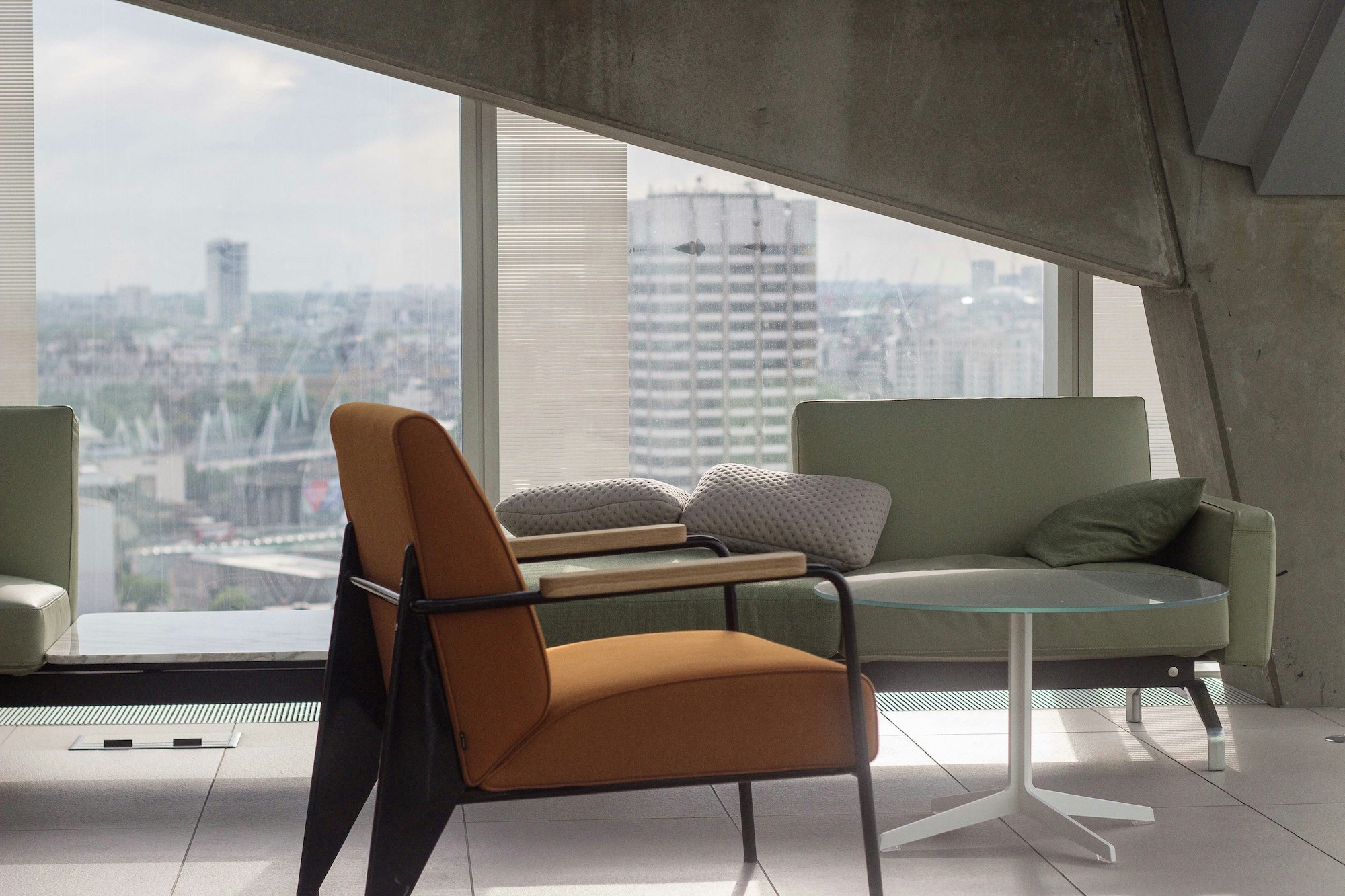What is a BREEAM Rating?
Developed by the Building Research Establishment (BRE), the BREEAM (Building Research Establishment Environmental Assessment Method) rating system reviews and scores buildings on a variety of key environmental criteria including energy use, water use, pollution, materials, waste, land use, and ecology.

What is BREEAM?
BRE has always had a rich heritage of pioneering cutting-edge development, and it's this ongoing commitment to innovation that led to the creation of the BREEAM rating system in 1990.
It has set the standard for making sure sustainability is one of the core factors and considerations in the development and design of buildings.
The BREEAM Process
It begins with a pre-assessment phase where the specific sustainability objectives for the project are defined. Following this, a BREEAM assessor works closely with the project team to collect the necessary evidence for assessment against BREEAM's set criteria.
The final stage is an independent verification of the assessment by BRE, culminating in the certification of the building's performance.
This rigorous process ensures that buildings achieving a BREEAM rating truly meet the highest standards of sustainability, making them not just better for the environment, but better for those who inhabit them as well.
How are the buildings rated?
This allows clients and stakeholders to evaluate and compare the sustainability performance of a specific building against other BREEAM rated buildings.
Each category is scored using credits. These credits are then weighted and combined to produce a single overall percentage score.
The process is carried out by a licensed BREEAM assessor, this is then independently verified by the BRE to ensure all standards have been met. The final BREEAM rating therefore provides a credible and impartial assessment of a building’s sustainability credentials.

What are the benefits of BREEAM?
Benefits to Building Developers
It showcases their commitment to sustainability, enhancing their reputation amongst potential clients, partners, and investors.
Moreover, a BREEAM certification can help streamline the planning permission process, as local authorities are more likely to favour sustainable projects.
Additionally, buildings with a high BREEAM rating can command higher sale prices, offering an opportunity for increased revenue.
Benefits to building owners
These buildings are more energy-efficient, leading to lower operation costs.
Furthermore, a BREEAM rating can enhance the market value of the building, attracting premium tenants and buyers who prioritise sustainability.
Owning a BREEAM-rated building also minimises risks related to future environmental regulations, ensuring the building remains compliant even as standards evolve.
Benefits to building occupiers
These buildings prioritise occupant health and well-being, incorporating features that enhance indoor air quality, natural light, and noise control.
Research has shown that these factors lead to a healthier and happier workforce increasing staff productivity and reducing absenteeism.

What are the different BREEAM ratings?
The categories are as follows:
- Unclassified: Buildings that do not meet the standard for a 'Pass' are unclassified. They may still be taking steps towards sustainability, but have not yet reached the minimum BREEAM standards.
- Pass: For buildings that achieve a score of >30%
- Good: For buildings that achieve a score of > 45%
- Very Good: For buildings that achieve a score of > 55%
- Excellent: For buildings that achieve a score of >70%
- Outstanding: For buildings that achieve a score of >85%
BREEAM assessment criteria
- Management
- Energy
- Water
- Transport
- Health & wellbeing
- Resources
- Resilience
- Land use & ecology
- Pollution
- Materials
- Waste
- Innovation
For example, the health and well-being category evaluates lighting, air quality, and acoustics, aiming to create a comfortable environment for occupants.
The energy category will evaluate the building's energy efficiency and steps taken to minimise CO2 emissions.
The higher a building scores across these categories, the higher its BREEAM rating will be.
BREEAM Rating Scales
These scales range from Unclassified to Outstanding, each reflecting a different level of environmental, social, and economic sustainability. The BREEAM rating scales are as follows:
- Unclassified: Less than 30%
- Pass: 30-44%
- Good: 45-59%
- Very Good: 60-74%
- Excellent: 75-89%
- Outstanding: 90% or higher
By achieving higher BREEAM ratings, buildings not only enhance their market value but also contribute positively to the environment and society.
Achieving a High BREEAM Rating
Here are some key strategies to help buildings reach the upper echelons of BREEAM ratings:
- Utilize Renewable Energy Sources: Incorporating solar panels, wind turbines, or other renewable energy systems can significantly reduce a building’s carbon footprint.
- Implement Energy-Efficient Design and Procurement Processes: Designing buildings with energy efficiency in mind, such as using high-performance insulation and energy-efficient lighting, can greatly enhance sustainability.
- Incorporate Sustainable Materials and Waste Management Practices: Using recycled or sustainably sourced materials and implementing robust waste management systems can minimize environmental impact.
- Promote Occupant Wellbeing: Ensuring high-quality indoor environments with good air quality, natural lighting, and noise control can improve occupant health and productivity.
- Encourage Sustainable Transportation: Providing facilities for cycling, electric vehicle charging stations, and access to public transport can reduce carbon emissions associated with commuting.
Choosing the Right BREEAM Standard
BREEAM offers a range of standards tailored to different types of buildings and projects:
- BREEAM New Construction: Ideal for new buildings and major refurbishments, this standard focuses on the sustainability of the design and construction process.
- BREEAM Refurbishment: This standard is suited for projects that involve refurbishing existing buildings without major construction work, ensuring they meet modern sustainability standards.
- BREEAM In-Use: Designed for existing buildings, this standard assesses the sustainability performance of buildings that are already in operation.
- BREEAM Communities: This standard is used for large-scale developments and masterplanning projects, focusing on the sustainability of entire communities.
- BREEAM Infrastructure: Tailored for infrastructure projects such as roads, bridges, and utilities, this standard ensures that these critical elements are developed sustainably.
Is BREEAM mandatory?
The legislation does not specifically require BREEAM certification; however, many local planning authorities across the UK encourage or even insist on a certain BREEAM rating as a condition for granting planning permissions.
Furthermore, BREEAM certification can be a requirement in lease agreements, with tenants increasingly demanding sustainable buildings.
Thus, while not strictly obligatory, obtaining a BREEAM rating is often a prerequisite for market competitiveness and future-proofing a building.

Innovation in BREEAM
These credits are given for design and construction practices that go beyond standard BREEAM criteria, pushing the boundaries of sustainability. Examples of innovation in BREEAM include:
- New and Emerging Technologies: Utilizing building information modeling (BIM) and smart building systems to enhance building performance and sustainability.
- Sustainable Materials and Waste Management: Incorporating cutting-edge materials and advanced waste management practices to reduce environmental impact.
- Energy-Efficient Design and Procurement Processes: Implementing innovative design strategies and procurement processes that maximize energy efficiency.
- High-Quality Indoor Environments: Creating indoor spaces that prioritize occupant wellbeing through superior air quality, natural lighting, and noise control.
BREEAM FAQs
Buildings must integrate cutting-edge technologies and design principles that significantly reduce environmental impact, surpassing regulatory standards by at least 85%.
This might include utilising renewable energy, advanced waste management systems and water conservation measures.
Buildings in London with a high BREEAM Rating
They offer a tangible, credible measure of a company's commitment to sustainability, which is increasingly being scrutinised by investors, customers, and prospective employees.
Being based in a building with a high BREEAM rating can enhance a business's reputation, align with ESG goals and meet BCorp standards, making it an invaluable asset in today's environmentally conscious business world.
Here are just a few examples of office spaces in London located in a building with an ‘Excellent’ or ‘Outstanding’ BREEAM rating:
1 Great Cumberland Place
This building which is part of the Portman Estate was designed with a focus on sustainability and wellbeing.
Everything has been thought about, from the low-energy light fittings to the photovoltaic panels on the roof.
The building is also right on the corner of Hyde Park allowing its occupants quick access to acres of green space.

20 Farringdon Street
HubHub operates a few floors of the building and has multiple offices currently available to rent.

The Future of BREEAM
- Wellbeing and Occupant Health: Increasing emphasis on designing buildings that promote health and wellbeing, ensuring comfortable and productive environments for occupants.
- Digital Technologies: Growing use of digital tools such as BIM and smart building systems to enhance building performance and sustainability.
- Climate Adaptation: The need for buildings to adapt to a changing climate, incorporating features that mitigate the impacts of climate change.
- Sustainable Materials and Waste Management: Continued focus on using sustainable materials and implementing effective waste management practices to reduce environmental impact.
Summary
Whether you're a developer aiming to attract premium tenants, a building owner looking to enhance your property’s value, or a business leader committed to creating a healthy and productive workspace, understanding BREEAM is essential.
At Tally Workspace, we understand the importance of sustainability in today’s business landscape, which is why we’re here to help you find the perfect office space that aligns with your values and goals.
Explore our selection of BREEAM-rated office spaces and make a choice that’s good for your business and the environment.


